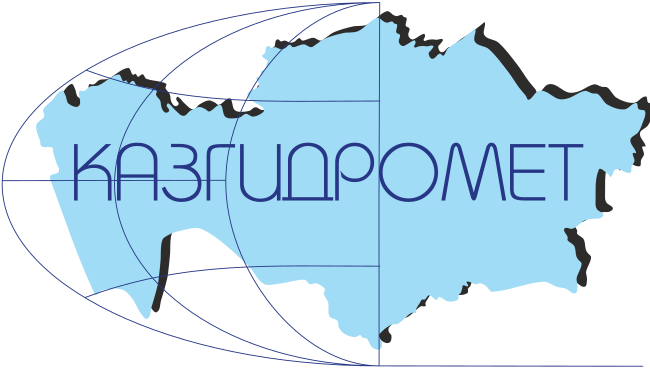ASSESSMENT OF HYDROLOGICAL DROUGHTS BASED ON THE RESULTS OF LONG-TERM HYDROMETEOROLOGICAL DATA OF THE ZHAIYK-CASPIAN WATER BASIN
DOI:
https://doi.org/10.54668/2789-6323-2024-112-1-26-38Keywords:
meteorological, agricultural and hydrological droughts, precipitation deficit, water basin, standardized precipitation indexAbstract
The article considers the problem of effective detection of the beginning and end of hydrological drought in the territory of Zhayk-Caspian water basin. Standardized Precipitation index (SPI) recommended by the World Meteorological Organization selected as drought predictor indicator. Based on the SPI Generator Application determined the characteristics of severe and extreme droughts from the beginning of instrumental observations to 2020 year. The results of the studies showed the effectiveness of the SPI index in detecting dry periods of the area under consideration, which allowed a differentiated diagnosis of hydrological droughts and their timing. The findings have practical relevance for agriculture and other water-dependent industries, information on the types and timing of droughts can be used to develop effective strategies to manage the water resources of the region and minimize the negative impacts of hydrological droughts
References
Владимиров А.М. Классификация гидрологических засух // Ученые записки РГГМУ № 23. Научно-теоретический журнал – СПб.: РГГМУ. – 2012. – С. 5-12.
Владимиров А.М. Факторы формирования экстремального стока в маловодный сезон. – СПб. Ученые Записки РГГМУ. – № 7. – 2008. – С. 13-22.
Подлипенская Л.Е., Кусайко Н.П., Ладыш И.А. и Долгих Е.Д. Мониторинг гидрологических засух по результатам многолетних данных Центра гидрометеорологии города Луганска. – Экологический вестник Донбасса. – №2. – 2021. С. 83-91.
Ali Danandeh, Mehr Ali, Unal Sorman, Ercan Kahya and Mahdi Hesami Afshar (2020). Climate change impacts on meteorological drought using SPI and SPEI: case study of Ankara, Turkey. Hydrological Sciences Journal. 65:2, 254-268, doi:10.1080/02626667.2019.1691218.
Brunner M.I., Götte J., Schlemper C. and Van Loon A.F. (2023). Hydrological drought generation processes and severity are changing in the Alps. Geophysical Research Letters, 50, e2022GL101776. https://doi.org/10.1029/2022GL101776
Edwards D.C., McKee T.B. 1997. Characteristics of 20th century drought in the United States at multiple time scales. Climatology Report No. 97 - 2. Colorado State University, Fort Collins Colorado, 155 pp.
G. Wong, H.A.J. Van Lanen and P.J.J.F. Torfs (2013). Probabilistic analysis of hydrological drought characteristics using meteorological drought. Hydrological Sciences Journal, 58:2, 253-270, doi:10.1080/02626667.2012.753147
Girotto M., Formetta G., Azimi S., Bachand C., Cowherd M., De Lannoy G. and Massari C. (2024). Identifying snowfall elevation patterns by assimilating satellite-based snow depth retrievals. Science of The Total Environment, 906, 167312.
Faquseh H. and Grossi G. (2024). Trend analysis of precipitation, temperature and snow water equivalent in Lombardy region, northern Italy. Sustainable Water Resources Management, 10(1), 18.
Markonis Y., Kumar R., Hanel M., Rakovec O., Máca P. and Aghakouchak A. (2021). The rise of compound warm-season droughts in Europe. Science Advances, 7(6), eabb9668. https://doi.org/10.1126/sciadv.abb9668
McKee T.B., Doesken N.J. and Kleist J. (1993). The relationship of drought frequency and duration to time scales, in: Preprints, 8th Conference on Applied Climatology, January 17-22, Anaheim, California, pp. 179-184.
https://drought.unl.edu/monitoring/SPI/SPIProgram.aspx
Stahl K., Hisdal H., Hannaford J., Tallaksen L.M., Van Lanen H.A., Sauquet E. (2010). Streamflow trends in Europe: Evidence from a dataset of near-natural catchments. Hydrology and Earth System Sciences, 14(12), 2367–2382. https://doi.org/10.5194/hess-14-2367-2010
Van Lanen H.A., Wanders N., Tallaksen L.M. and Van Loon A.F. (2013). Hydrological drought across the world: Impact of climate and physical catchment structure. Hydrology and Earth System Sciences, 17(5), 1715–1732. https://doi.org/10.5194/hess-17-1715-2013
Van Loon A.F. and Laaha G. (2015). Hydrological drought severity explained by climate and catchment characteristics. Journal of Hydrology, 526, 3–14. https://doi.org/10.1016/j.jhydrol.2014.10.059
World Meteorological Organization (WMO) and Global Water Partnership (GWP), 2016: Handbook of Drought Indicators and Indices (M. Svoboda and B.A. Fuchs). Integrated Drought Management Programme (IDMP), Integrated Drought Management Tools and Guidelines Series 2. Geneva.





